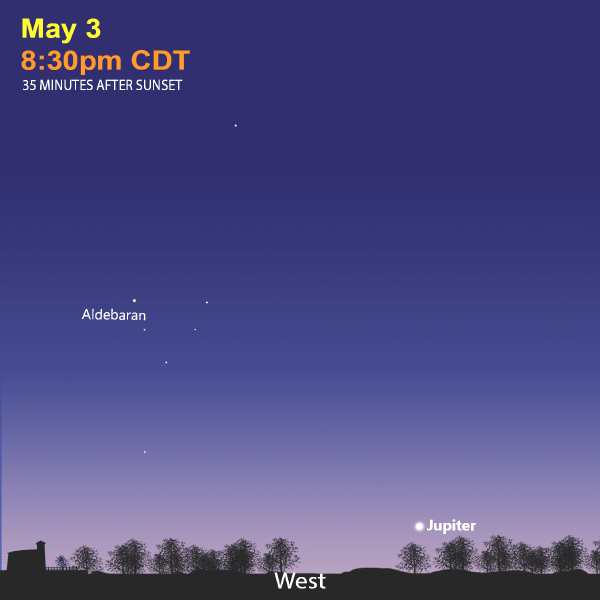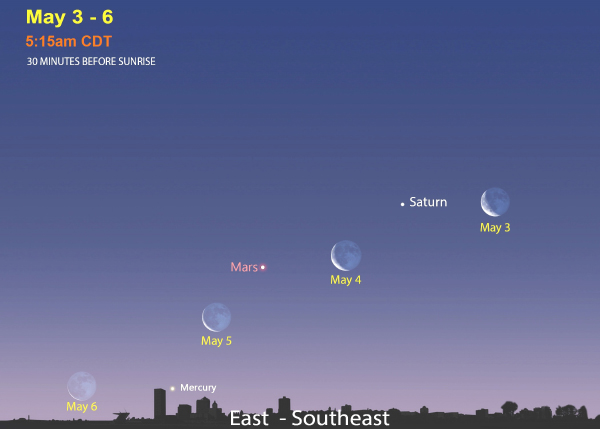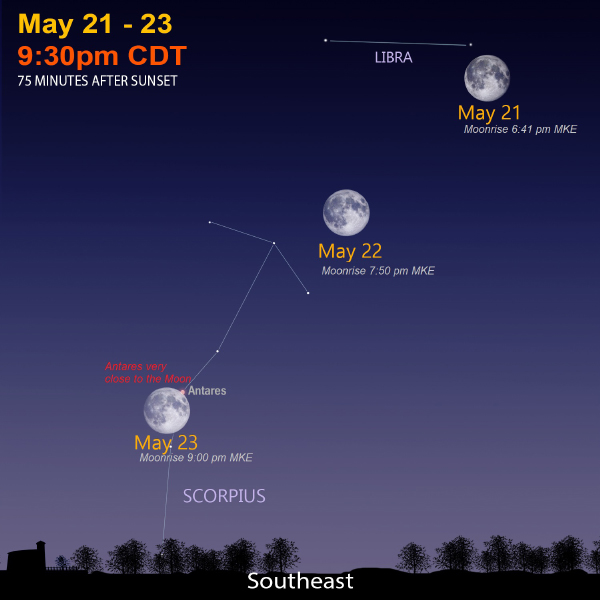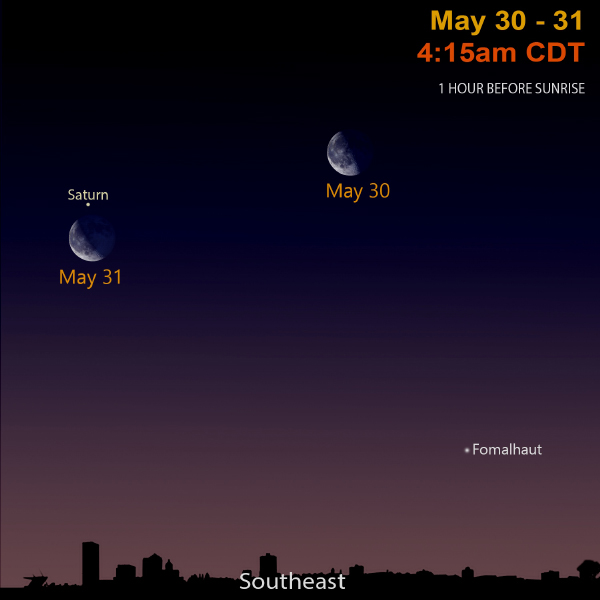Cosmic Curiosities
"A total eclipse of the sun...is the most sublime and awe-inspiring sight that nature affords."
- Isabel Martin Lewis. American Astronomer
Counterfeit Cosmos
It seems to be getting worse: Fake images are not limited to popular culture here on Earth — they have ventured deep into space. I come across many sham space-scenes when researching content for Planetarium programs. Sometimes, they are purposely misleading; other times, it is an artist honestly portraying the cosmos through their own inspiration.
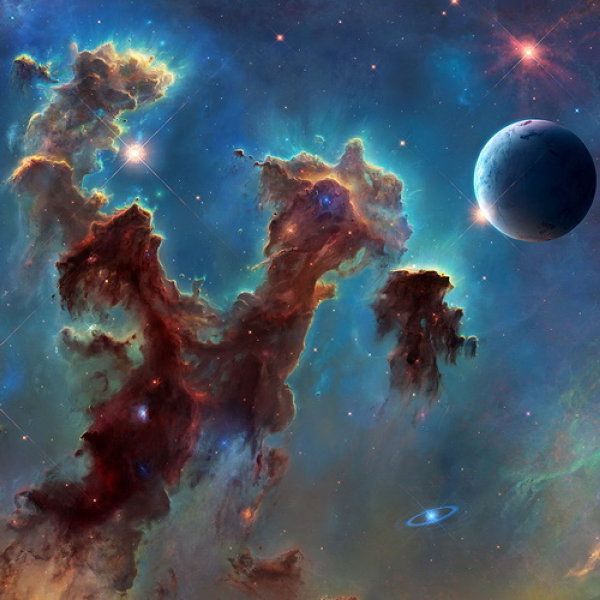
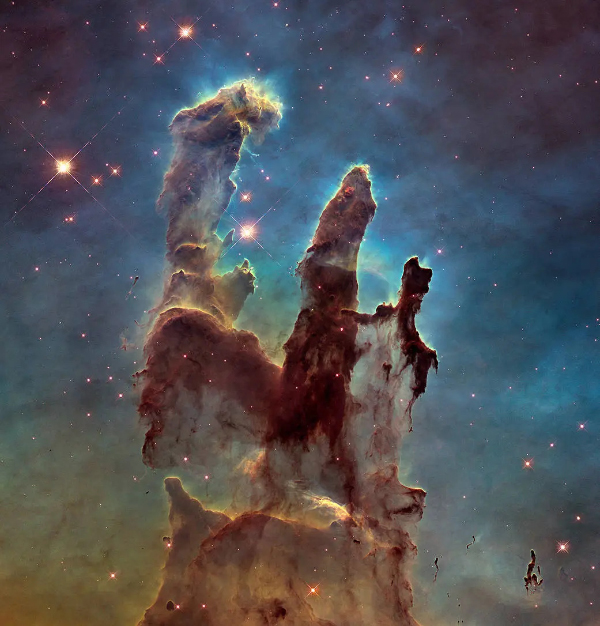
Left: Artist Tim Barton Space Image | Right: NASA: Pillars of Creation, Hubble Space Telescope
For example, the image on the left is by artist Tim Barton. It looks like the Pillars of Creation in the Eagle Nebula, or M16. The artist added a planet to an image that a telescope would never see that faraway in space. It is a nice work of art, but depending on when and where it is shown, it could be received as an actual photo, and then shared around the internet as real.
The true image of deep space is on the right. This Pillars of Creation image was first taken almost 30 years ago by the Hubble Space Telescope. The colorful space-clouds are part of an active star-forming region within the Eagle Nebula and hide newly born stars in their wispy columns. It is about 7,000 light years from Earth in the constellation Serpens.
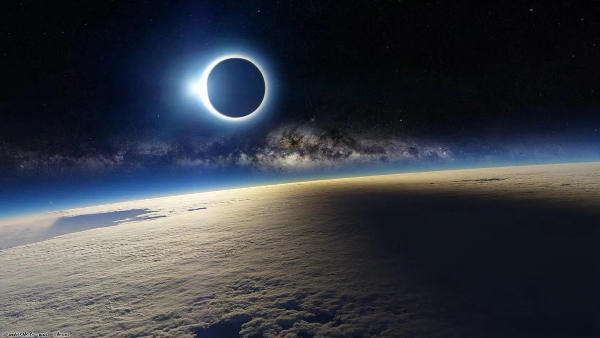
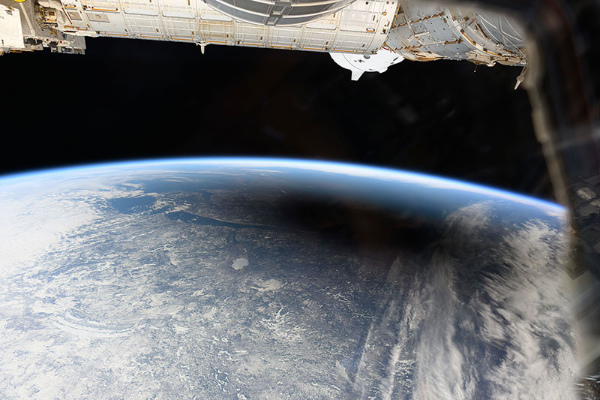
Left: DeviantArt | Right: NASA: International Space Station
The enticing “photograph” of a solar eclipse on the left is not real. It was found on the DeviantArt website years ago and quickly spread around the web. It combined a real image of the Milky Way galaxy with digital artwork. A real eclipse image on the right is from the International Space Station (ISS). The picture shows the moon’s shadow during the April 2024 eclipse.
One straightforward way to spot fake images is to check the source. NASA (National Aeronautics and Space Administration) is very reliable—as are many related NASA sites, like JPL and Goddard. Many amateur astronomers are posting incredible, real images online. To check on any image’s veracity, you must find out more about the person who posted it and look carefully at the details on how the picture is presented.
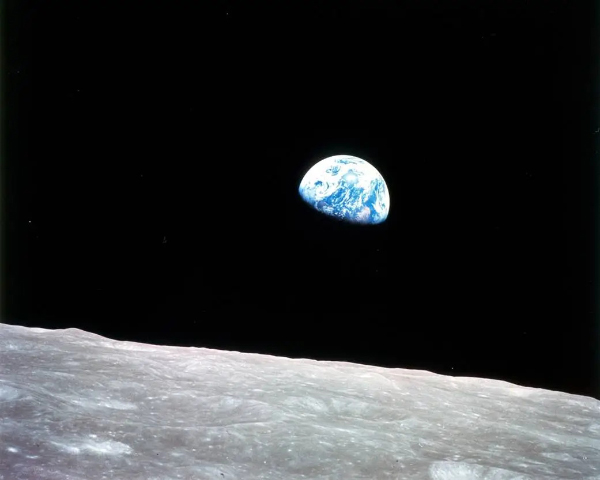
Earthrise: NASA 1968; Photo by Astronaut Bill Anders
Sometimes, space images—from our nearby moon to distant galaxies—can be so striking they are displayed in art galleries. A recent one called Apollo's Muse: The Moon in the Age of Photography opened at the Metropolitan Museum of Art in New York in 2019 to celebrate the 50th anniversary of Apollo 11. At this exhibit, many real images of the moon were blended with various depictions and drawings from throughout history.
Lately, though, with advances in AI and Photoshop-type programs, captivating space sights might be an artist’s drawing or faked intentionally. Sometimes, it can just be someone having fun, like this image of a dog on the moon.
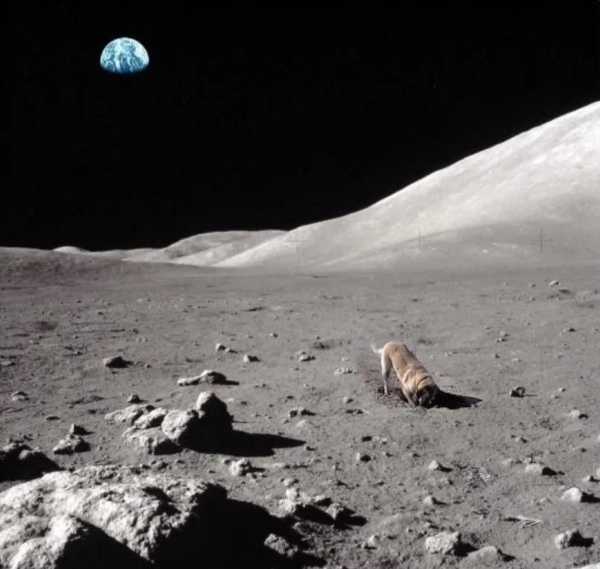
NASA image with addition by unknown person.
True, a lot of space pictures are enhanced. Many of us do this on our smartphone cameras. We adjust a picture’s brightness, contrast, and/or color to make the picture more enticing. But it’s still a real image.
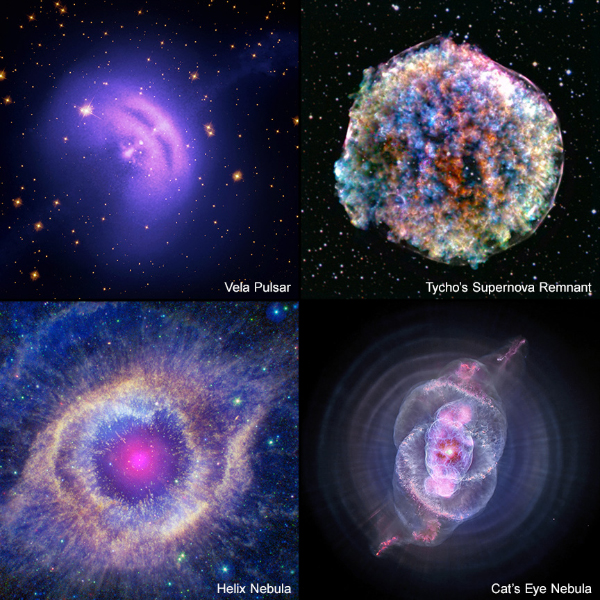
Chandra X-Ray Observatory
NASA does this with many space shots. Often, it is out of necessity. For example, if they take a picture with the Chandra x-ray telescope, they will convert x-ray “light” into a visual color the human eye can see. Chandra will combine its x-ray data with other imagery taken by other telescopes across the electromagnetic spectrum. They are then combined into stunning images as seen in the four pictures above.
To decide whether an image is true deep space or a deep fake, one needs to do a little digging. If you are still unsure, send it to us and we will see if we can help!
Comet Patience
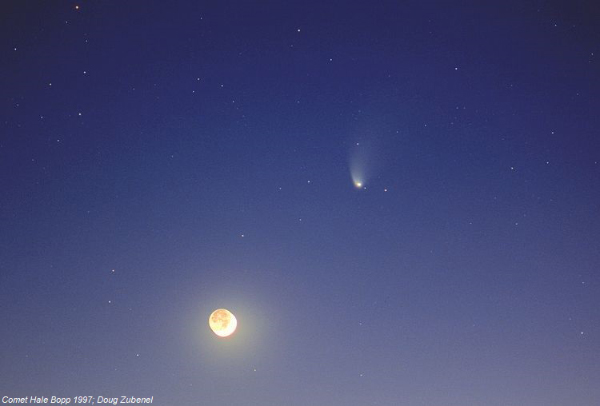
An easy-to-see bright comet is rare. The last one occurred 27 years ago. It was Comet Hale-Bopp, and it was amazing! I recall seeing it from downtown Minneapolis back in 1997.
Comets are often called “dirty snowballs” because they consist of rock and ice. But they are much bigger than snowballs—so let’s call them “dirty icebergs”! They typically range from a mile or so to tens of miles long. They circle the sun in long, eccentric orbits. Some take a few years. Others take thousands. As they get close to the sun, they speed up and then heat up. Spewing gas and dust creates two tails that stretch behind the comet for millions of miles.
On average, there is one visible comet to the naked eye per year. However, they are not very bright. You need to be dedicated and have the right equipment to see them. This means venturing far from city lights with a good pair of binoculars or small telescope. You can also “see” a faint comet by taking a long-exposure photograph. Very bright comets are called great comets, like Halley’s comet—which does not visit Earth again until 2061! It is not always about the size of the comet, though. Other factors, like distance to Earth, are huge. Also, the comet’s closest distance to the sun and the Earth’s position at that time are both a big deal in determining brightness.
New comets can appear suddenly from the deepest part of our solar system. Back in 2020, comet NEOWISE came rushing toward the sun in its nearly 7,000-year orbit. It was big as comets go at more than three miles in diameter. Its closeness to Earth was good enough to be seen with the naked eye, but just barely (and only if you were far from city lights). My photo above was a five-second exposure, so it was not that bright to the naked eye.
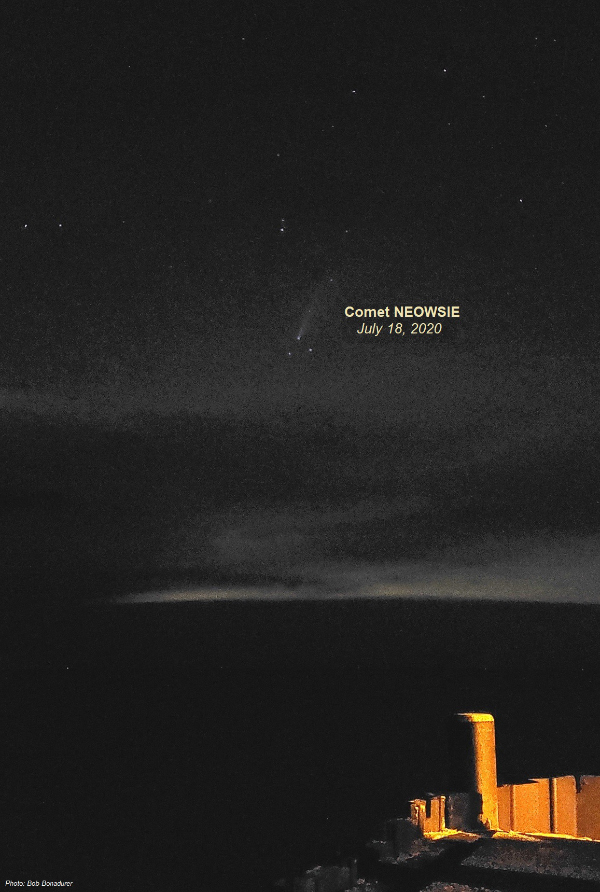
When will we next see another great comet here in Milwaukee? Who knows? Guess we must have some comet patience...
Eclipse Reflections
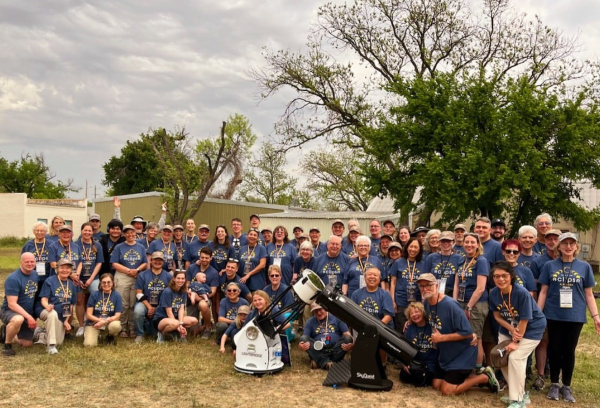
Our Texas trek to see the moon eclipse the sun was an awesome adventure!
The group of 65 people came from all over: Wisconsin, Minnesota, Michigan, Illinois, New York, California, England, and the Netherlands. Our ages ranged all over, too; Baby Lune (Luna) was only six months old, while some of us—shall we say—are a bit more experienced.
We all met in San Antonio on Friday, April 5, and bonded quickly. There were many friends from previous eclipse trips and many new friends, eclipse first-timers! We shared stories, laughs, reflections, rides, meals, tours, and, of course, the total solar eclipse on Monday, April 8.
On eclipse day, we journeyed north and west to St. Theresa’s Catholic Church in Junction, Texas. Gloria, our host, was splendid. We had four sites reserved and this was the most promising for clear skies.
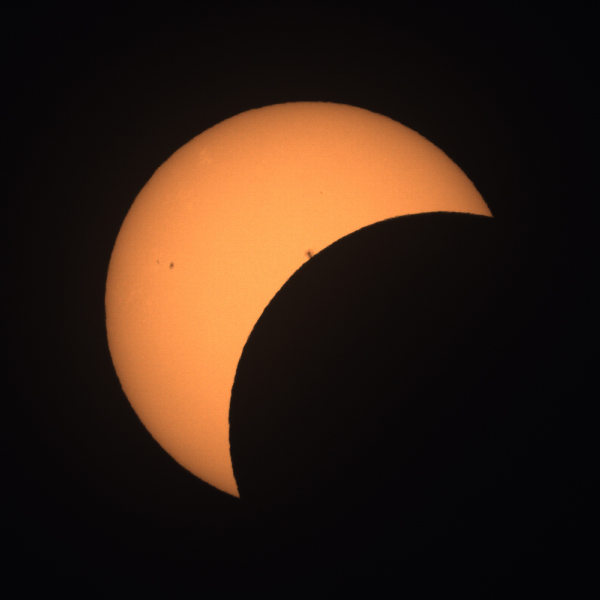
Some pesky clouds had their way, but we all witnessed so much of the eclipse. And the best part? We gasped at the awe of totality! We stood together in delight, marveling in the strange and beautiful darkness of the moon’s shadow.
Everyone experiences this amazing celestial sight differently. Personally, I always feel mesmerized as I stare at the stark magnificence of the eclipse. I try to take in all the precious moments: Our planet’s two brightest lights, positioned perfectly, in this rare and fleeting alignment.
Ominous clouds hid the diamond ring—the start of totality. But opportunity still knocked! I looked around and noticed things I had never seen or felt before. I witnessed the wild, speedy rush of the moon's dark shadow sweeping over me and our entire group. I gazed around at all the sky colors, the birds acting as if night fell, the streetlights popping on, and the cooler temperature. Then, the clouds took a break, and the eclipsed sun revealed itself for the first time. I placed my hand over my heart, enthralled and thankful.
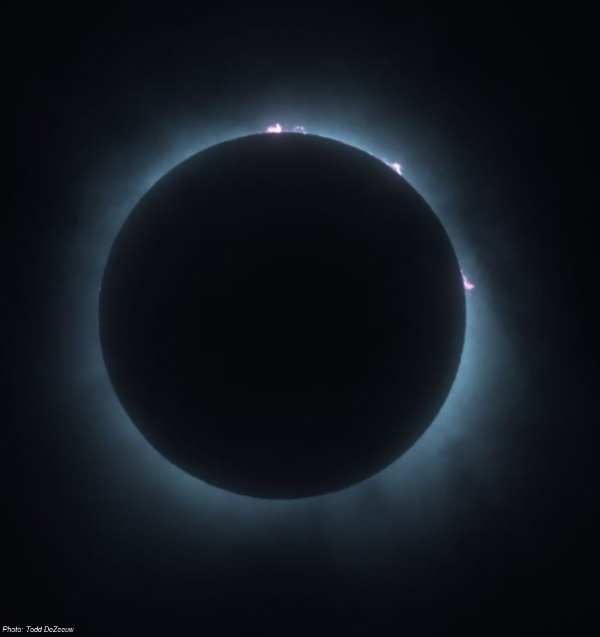 No picture will ever do a total solar eclipse justice. My eye-to-brain-to-heart reactions to what I saw on April 8 are forever frozen inside me. The joy I shared with our group makes me smile.
No picture will ever do a total solar eclipse justice. My eye-to-brain-to-heart reactions to what I saw on April 8 are forever frozen inside me. The joy I shared with our group makes me smile.
Space in Sixty Seconds
Learn more about the stellar sights of the May sky.
Sky Sights
Jupiter will be visible very low in the evening sky, but only for a few nights in early May. The largest planet will be at superior conjunction (when Jupiter passes behind the sun as seen from the Earth) on May 18.
Watch the waning Moon orbit past Saturn, Mars, and Mercury from May 3-6. Mercury will be very hard to see very low in the sky.
The bright Moon (full moon on night of May 22-23) will occult (eclipse) the bright red star Antares on the night of May 23—but only for 10 minutes. The moon rises at 9 p.m. and Antares quickly reappears at 9:10 p.m., when they are low in the SE sky. Try to catch this rare event if you can.
See the last quarter Moon pass Saturn one more time this month on the morning of May 31.
Venus is too close to the sun to be seen this month. The bright planet is at superior conjunction on June 4, orbiting behind the sun. Venus will be seen again in the evening sky in early July.
May Star Map
Sign Up
Receive this newsletter via email!
Subscribe
See the Universe through a telescope
Join one of the Milwaukee-area astronomy clubs and spot craters on the Moon, the rings of Saturn, the moons of Jupiter, and much more.
Follow Bob on social media
Twitter: @MPMPlanetarium
Facebook: Daniel M. Soref Planetarium


